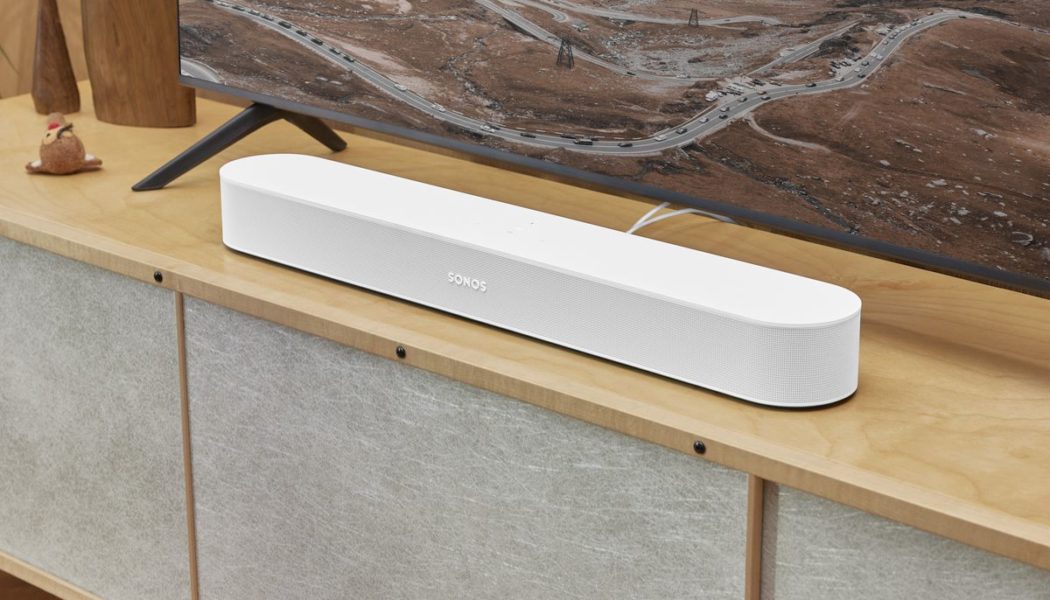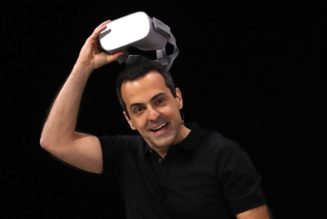When Sonos announced price increases for the majority of its product lineup last week, some people noticed that the entry-level Beam soundbar was absent from the list. And indeed, that’s because the company has been at work on a follow-up. The new second-generation Beam being announced today costs $449 (a $50 increase over the original) but adds Dolby Atmos audio and an improved external design. It’ll be available October 5th in black or white.
But there’s something you should know about the Atmos part right off the bat: the new Beam doesn’t actually include any up-firing speakers. In fact, the drivers inside are the exact same as before: there’s a center tweeter, four woofers, and three passive radiators to give bass some extra kick. The outside of the Beam has switched from a fabric cover to Sonos’ signature perforated plastic, but nothing about the internal layout has really changed. Sonos says the second-gen model has a more capable CPU that’s 40 percent faster. This extra horsepower allows the company to pull off more advanced audio virtualization.
The new Beam has more “arrays,” which is what Sonos calls the software that coordinates all the playback and phase adjustments that produce immersive sound. The original Beam had three arrays, but the new model has five. The two additional arrays are used for steering surround and height audio around the room.
:no_upscale()/cdn.vox-cdn.com/uploads/chorus_asset/file/22849134/beam_credenza_white.jpg)
Despite a lack of actual up-firing drivers — Sonos told me it couldn’t squeeze any into the Beam’s compact form factor — the company insists the second-gen Beam will deliver a real sense of verticality when paying Atmos content. This seems like one of those cases where you’ll have to hear it to really believe it, and I haven’t had the chance to demo the new soundbar yet. Sonos claims there’s consistently an improved feeling of spaciousness with the refreshed Beam that applies whether you’re watching Atmos, regular 5.1 surround, or even stereo content. And dialogue clarity also comes through clearer than before.
In most other ways, this Beam doesn’t shake up the formula very much. It’s still got the one HDMI port, which this time has been upgraded to eARC and is thus capable of handling Dolby Atmos, Dolby TrueHD, and multi-channel LPCM. If everything else in your TV chain is also HDMI 2.1, eARC should help eliminate any audio sync issues when gaming.
:no_upscale()/cdn.vox-cdn.com/uploads/chorus_asset/file/22849139/beam_back_white.jpg)
Here’s another bit of welcome news: Sonos says it will roll out support for DTS surround later this year for all soundbars that are on its S2 platform. That extends back to products like the Playbar and Playbase, so quite a few devices will be gaining the added functionality. Sonos is also jumping on board with high-resolution audio and Dolby Atmos music streaming. The company says it’ll support both of those features from Amazon Music in the coming months; no word on Apple Music, though.
Aside from its slight design refinements, a faster processor, and the inclusion of Atmos, the second-gen Beam otherwise sticks to what made the first model work well: it’s compact and a nice match for apartment renters or anyone who wants to step up their TV and movie sound quality for much less money than the far larger, more powerful Arc. Of course, you also get a Sonos speaker out of the deal and all the multi-room audio system perks that come with buying in.
The main question that remains is how well Sonos can make Atmos work on a soundbar that lacks height speakers. The new Beam was never going to measure up to the company’s $800 $900 flagship Arc soundbar, but I’m looking forward to seeing whether Sonos can really trick my brain into believing the second-gen Beam is more than meets the eye.









